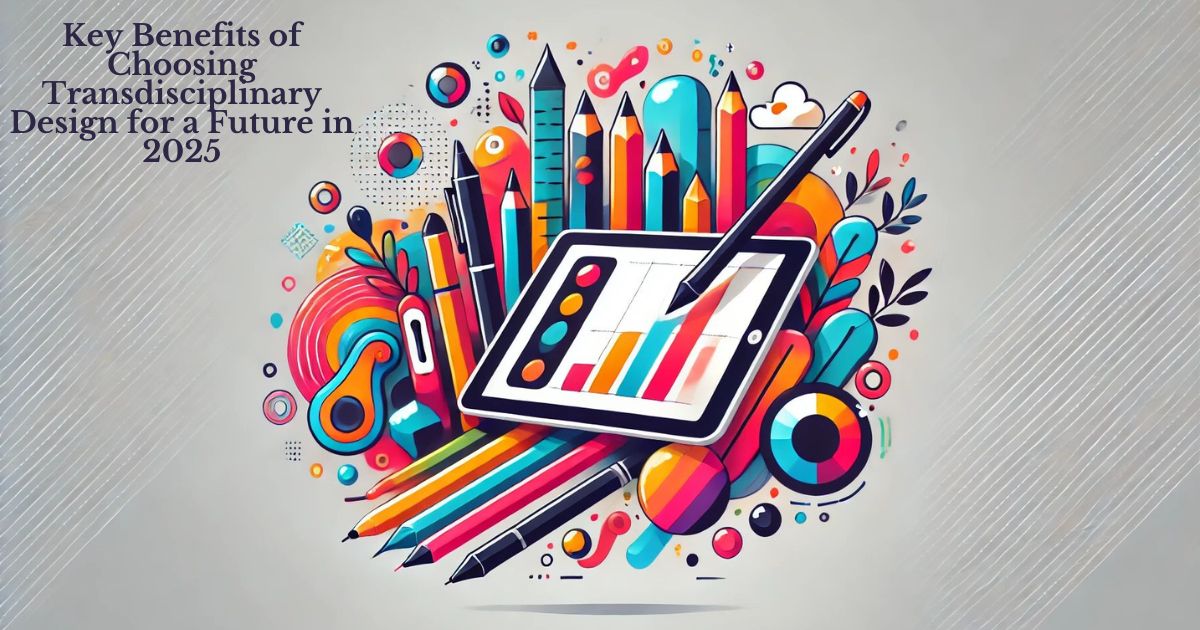In today’s dynamic world, where industries are converging and innovation is at its peak, transdisciplinary design is emerging as a key approach to problem-solving and creativity. This methodology integrates multiple disciplines, offering students a holistic learning experience that prepares them for evolving career landscapes. If you’re considering a career in design, exploring transdisciplinary education in fields like B.Des in Interior Design, B.Des Fashion Design, and B.Des Space and Interior Design can offer a competitive edge. Let’s delve into the major benefits of choosing transdisciplinary design in 2025.
1. Exposure to Multiple Disciplines
One of the greatest advantages of transdisciplinary design is the opportunity to learn from various fields. Instead of focusing solely on traditional design principles, students engage with subjects like architecture, technology, sustainability, psychology, and digital arts. This broad knowledge base enhances their ability to tackle complex design challenges. Whether you pursue a B.Des in Interior Design or a B.Des Fashion Design, you’ll gain insights from various disciplines that shape your creative thinking.
2. Future-Ready Skillset
The demand for designers with a transdisciplinary mindset is growing as industries seek professionals who can adapt and innovate. Programs like B.Des Space and Interior Design integrate skills in spatial planning, material sciences, and user experience design, making graduates highly valuable in the workforce. With exposure to various methodologies and problem-solving techniques, students develop a unique skillset that aligns with industry needs.
3. Enhanced Career Opportunities
A transdisciplinary approach unlocks diverse career paths across industries. For instance, graduates from B.Des Interior Design programs can explore roles in architecture firms, urban planning, sustainable design, and even virtual reality environments. Similarly, B.Des Fashion Design students can enter fashion technology, wearable tech, or sustainable fashion industries. By combining different disciplines, designers expand their career options and gain a competitive edge.
4. Strong Problem-Solving Abilities
Designers often face complex challenges that require creative solutions. Transdisciplinary education encourages students to think beyond conventional boundaries. For example, an interior designer with knowledge of psychology and environmental sciences can create spaces that enhance well-being and productivity. Programs like B.Des Space and Interior Design equip students with analytical skills to address design problems innovatively.
5. Integration of Technology in Design
Technology plays a crucial role in modern design, and transdisciplinary education ensures that students stay updated with the latest advancements. Whether it’s AI-driven fashion design, parametric architecture, or smart interior solutions, integrating technology with design broadens career possibilities. Programs such as B.Des in Interior Design and B.Des Fashion Design emphasize digital tools, automation, and data-driven design strategies.
6. Collaborative Learning Environment
Transdisciplinary courses promote teamwork and collaboration, mirroring real-world scenarios where designers work alongside engineers, psychologists, marketers, and other experts. This collaborative learning fosters creativity and prepares students for interdisciplinary projects in their professional careers. Whether you opt for B.Des Interior Design or B.Des Space and Interior Design, working with peers from different backgrounds enhances your adaptability and communication skills.
7. Industry-Relevant Curriculum
With industries rapidly evolving, traditional design education may not always keep pace. Transdisciplinary programs ensure that students receive an updated curriculum that aligns with market trends. Courses in B.Des in Interior Design and B.Des Fashion Design often include real-world projects, internships, and industry collaborations, ensuring practical exposure and hands-on experience.
8. Sustainability and Ethical Design Practices
With increasing awareness of sustainability, transdisciplinary design encourages students to integrate ethical practices into their work. Whether designing eco-friendly interiors, sustainable fashion, or energy-efficient urban spaces, students in B.Des Interior Design and B.Des Space and Interior Design learn to create solutions that align with environmental and social responsibility.
9. Personal and Professional Growth
Engaging in transdisciplinary design fosters intellectual curiosity, adaptability, and resilience. These qualities not only shape better designers but also prepare students for leadership roles in the industry. Graduates of B.Des Fashion Design, B.Des Interior Design, and related courses are equipped with the confidence to innovate and lead in their respective fields.
10. A Step Towards Entrepreneurial Success
For aspiring entrepreneurs, transdisciplinary knowledge is invaluable. By understanding multiple aspects of design, technology, and business, students can develop innovative startups and disruptive solutions in the industry. Whether launching a fashion brand, an interior design consultancy, or a digital design studio, the possibilities are limitless with a well-rounded education.
Conclusion
Transdisciplinary design is shaping the future of creative education, and opting for courses like B.Des in Interior Design, B.Des Fashion Design, and B.Des Space and Interior Design can significantly enhance your career prospects. The integration of multiple disciplines not only broadens your skillset but also prepares you for the evolving demands of the industry. If you’re looking for a dynamic, future-focused design education in 2025, transdisciplinary programs should be at the top of your list!





Innovative path blending creativity, skills, and opportunities.